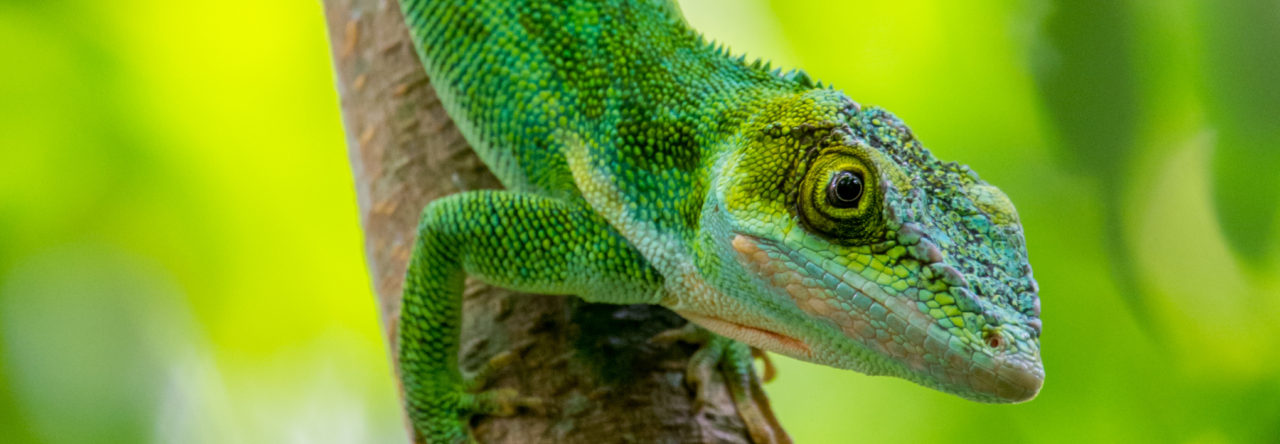Get all the details in the newly posted paper by Eckalbar et al. in BMC Genomics “Genome reannotation of the lizard Anolis carolinensis based on 14 adult and embryonic deep transcriptions,” just posted on BMC Genomics. Here’s the low-down: “The green anole lizard, Anolis carolinensis, is a key species for both laboratory and field-based studies of evolutionary genetics, development, neurobiology, physiology, behavior, and ecology. As the first non-avian reptilian genome sequenced, A. carolinensis is also a prime reptilian model for comparison with other vertebrate genomes. The public databases of Ensembl and NCBI have provided a first generation gene annotation of the anole genome that relies primarily on sequence conservation with related species. A second generation annotation based on tissue-specific transcriptomes would provide a valuable resource for molecular studies. Here we provide an annotation of the A. carolinensis genome based on de novo assembly of deep transcriptomes of 14 adult and embryonic tissues. This revised annotation describes 59,373 transcripts, compared to 16,533 and 18,939 currently for Ensembl and NCBI, and 22,962 predicted protein-coding genes. A key improvement in this revised annotation is coverage of untranslated region (UTR) sequences, with 79% and 59% of transcripts containing 5′ and 3′ UTRs, respectively. Gaps in genome sequence from the current A. carolinensis build (Anocar2.0) are highlighted by our identification of 16,542 unmapped transcripts, representing 6,695 orthologues, with less than 70% genomic coverage. Incorporation of tissue-specific transcriptome sequence into the A. carolinensis genome annotation has markedly improved its utility for comparative and functional studies. Increased UTR coverage allows for more accurate predicted protein sequence and regulatory analysis. This revised annotation also provides an atlas of gene expression specific to adult and embryonic tissues.”
- Evolution in Real Time on Lizard Island - March 23, 2025
- Spider Snags Adult Anolis osa - March 22, 2025
- An Homage to the Green Anoles of New Orleans - March 21, 2025


Todd Jackman
This will be great once the ASU annotation has been incorporated into Ensembl –
They don’t appear to have taken advantage of the Python molurus genome – because it is not annotated, I don’t think it’s included in the Blast2go package they used to compare Anolis to other vertebrates. “The remaining group of genes (2,318/5,246) aligned to the Anocar2.0 assembly but had poor vertebrate homology. This group may include novel lizard genes and rapidly diverging genes such as noncoding RNAs.” These genes should be compared to Python to find squamate specific and/or rapidly evolving genes (which is what I will do once I can get access to Biomart)